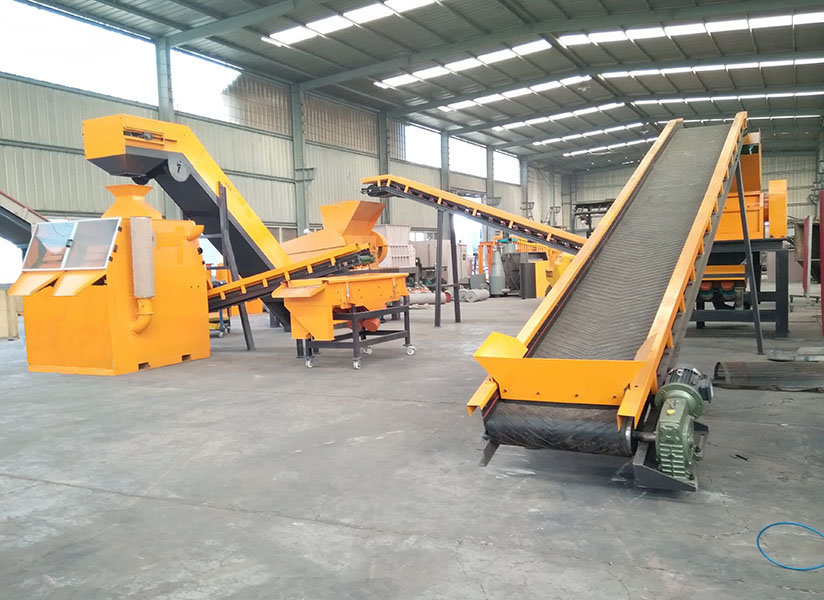

ное. . 27, 2024 09:13 Back to list
The Art and Engineering of Metal Shredders A Deep Dive into the Fascinating Process
In the world of waste management and recycling, few pieces of machinery are as captivating and powerful as metal shredders. These colossal machines are designed to break down scrap metal into manageable pieces, making it easier for recycling and reuse. The ingenuity behind metal shredders is not just in their design, but also in their operational processes, which can be fascinating to observe. Let's explore the functionality, types, and environmental impact of metal shredders, underscoring their importance in today’s recycling industry.
Understanding Metal Shredders
Metal shredders are large-scale machines that utilize a powerful grinding mechanism to crush and dismantle metal objects. They are typically composed of massive rotating blades that tear through metal with relentless force. These blades operate at high speeds, making it possible to shred everything from small scrap bits to large industrial machinery.
The shredding process begins with the feed of metal into the machine, which can include anything from discarded cars to construction scrap. The shredders work by breaking down these materials into smaller pieces, which can then be processed further to extract valuable metals.
Types of Metal Shredders
There are several types of metal shredders designed to handle different sizes and types of materials
. The most common types include1. Primary Shredders These are often used as the first stage in the shredding process. They are designed to handle large, bulky items like cars, appliances, and oversized scrap metal.
2. Secondary Shredders Once materials are reduced to smaller sizes by primary shredders, secondary shredders refine the pieces further. These are typically used to achieve a uniform size, which is crucial for efficient recycling.
3. Granulators These machines are sensitive to the type of metal being shredded and are designed for processing specific materials into fine particles. Granulators excel in recycling electronics and other delicate metal components.
The Shredding Process

The shredding process can be best understood in several stages
1. Feeding The metals are loaded into the shredder. This can be done manually or via conveyor systems, depending on the size and quantity of materials.
2. Shredding Once inside the shredder, the rotating blades engage the metal. The design and speed of these blades determine how quickly and effectively the metal is shredded. As the metal is crushed and torn, it is simultaneously sorted into smaller segments.
3. Separation After shredding, the material often includes a mix of metal types and impurities. Advanced shredders use magnets and eddy current separators to separate ferrous and non-ferrous metals and ensure a cleaner product.
4. Output Finally, the shredded metal is discharged from the machine, ready for further processing. Depending on the equipment used, the output can be in various sizes, ranging from coarse chunks to fine grains.
Environmental Impact and Benefits
Metal shredders play a pivotal role in the recycling process and have several environmental benefits. By converting scrap metal into smaller pieces, they facilitate recycling, which significantly reduces the need for mining new metals. Mining is resource-intensive and has a profound ecological impact, which makes recycling not just a best practice but a necessity for sustainable living.
Furthermore, the use of metal shredders reduces landfill waste. Instead of discarded machinery or cars cluttering up landfills, these items can be transformed into reusable materials, reducing the strain on our disposal sites.
Conclusion
Watching a metal shredder in action is a testament to human ingenuity. The sight of massive machines efficiently breaking down large metal objects into manageable pieces evokes a sense of awe. Metal shredders are vital components of the recycling ecosystem, enabling the recovery of valuable materials while supporting environmentally friendly practices. As we move toward a more sustainable future, the engineering behind metal shredders will continue to evolve, making our recycling processes even more efficient and impactful. Understanding and appreciating the function of these machines is essential for recognizing their role in transforming waste into resources.
Latest news
eddy-separator-for-non-ferrous-metals
NewsAug.22,2025
e-waste-bin-for-collected-spray-cans-sustainable-disposal-solutions
NewsAug.22,2025
dual-shaft-shredder-with-adjustable-blade-gaps
NewsAug.22,2025
hammer-crusher-machine-with-secondary-crushing
NewsAug.22,2025
copper-granulator-our-promise-of-recycling-excellence
NewsAug.22,2025
industrial-shredders-crafted-for-e-waste-recycling
NewsAug.22,2025